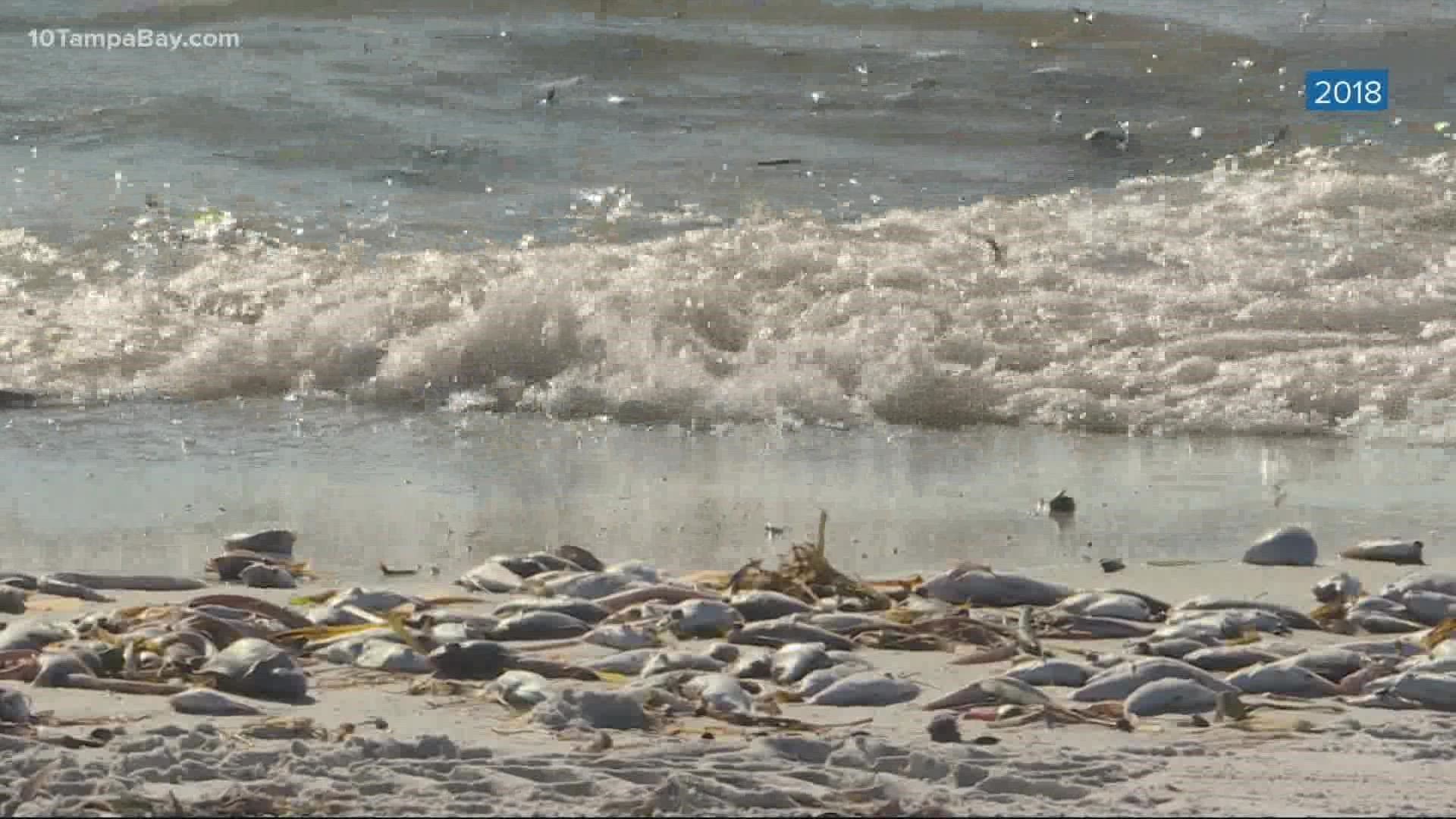ST. PETERSBURG, Fla. — Last year's red tide outbreak along beaches across the Tampa Bay area was one of the worst the region had seen in years. For months, shorelines were littered with thousands of dead sea life — a plague that filled the air with rotting fish flesh.
But, it wasn't too many summers prior that Florida was in the midst of another historic outbreak. In 2018, the Sunshine state was dealing with one of the most severe blooms documented until that point. And, according to new research, that led to not only tons of dead sea life sitting on beaches and near marinas, but millions of dollars in lost tourism revenue.
Researchers with the University of Florida found during the 2018 bloom — which actually took place between October 2017 and January 2019 — roughly $184 million was lost in the tourism sector. And, because of the shrinking Airbnb market at the time, nearly 2,900 jobs were lost throughout the state.
Most of the economic losses took place in Southwest Florida, according to the study. However, researchers say spillover effects caused more than 15% of the overall economic effects that happened throughout the state.
“If this phenomenon can’t be avoided, then local and state authorities and tourism management professionals must design and implement appropriate risk management strategies to minimize their effects and increase resiliency of the tourism industry to these types of events," said Dr. Joao-Pedro Ferreira, a lead author of the study.
The red tide organism Karenia brevis is naturally occurring, but local researchers and scientists have said climate change and human activity remain a concern and contributing factor to recent blooms.
The blooms can last as little as a few weeks or longer than a year and can even subside and then reoccur, according to the Florida Fish and Wildlife Conservation Commission.
This new study also points to the need to address the impacts of red tide and other harmful algae blooms at a national level. Researchers say their work can act as a national framework for future assessments of blooms and inform decision-making.

